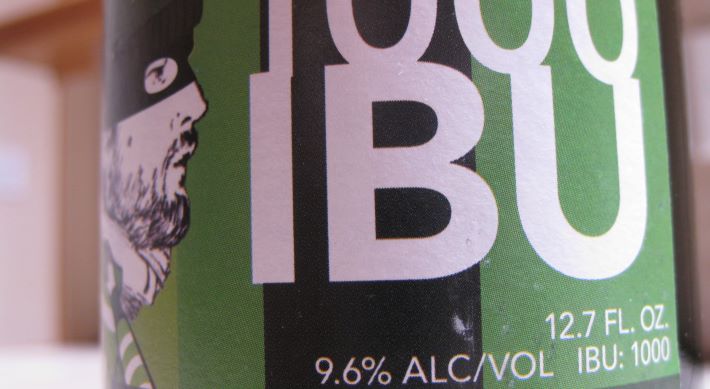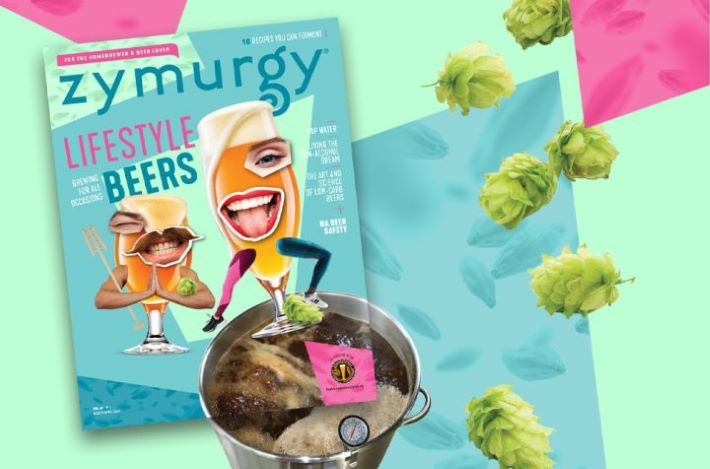
QUOTE OF THE WEEK
“This is the formula. Mix activity with alcohol, and the people will come.”
— From At Stock Market Bar Night, Buy Low and Drink Up.
Is Craft Beer Cringe Right Now? Years ago, loving an IPA meant you were hip. What happened? is not short and covers a lot of history most of you who visit here on Mondays have lived through. So no summary from me that would not do it justice. In other words, read it for yourself.
Instead, I will lean into what Courtney Iseman lists as not cringe: “It’s important to define what’s eliciting eye rolls. It’s obviously not cringe to take your job seriously if you make beer or work with it; it’s not cringe to enjoy craft beer, learn about it and help foster the community aspect of it, whether as a professional or an enthusiast. Breweries who make a balance of what brewers and consumers want to drink sans judgment or snark, and who are more invested in creating an engaging third place: not cringe. And brewery owners, brewers, beer educators, beer judges and beer influencers who are members of underrepresented communities, as well as those devoting time and energy to diversity, equity and inclusion (DEI) initiatives, all in the name of leveling the playing field? They are the exact opposite of all that’s being roasted within the craft beer space. They are the reason to still be excited about craft beer.”
To that I will add people who might be drinking beer at The Flats Beer Garden on the road between Golden and Boulder, Colorado, and thousands of similar establishments across the country. (Although few have views quite as spectacular at The Flats.) There are many reasons they might be there, and beer is just one of them. At the Flats, that will be likely be a draft beer from a small-ish Colorado brewery that costs more than those from very large breweries offered in cans and bottles. Modifiers—craft, local, independent, fancy—aren’t necessary.
And there’s a good chance that cringe is not a word many of the customers use very often.
LEDE OF THE WEEK
When you walk into Gilly’s House of Cocktails in San Diego’s North Park neighborhood, you’ll catch folks circling around one of the two billiards tables playing pool for free, likely with a beer in hand. You’ll see an $11 Adios Motherfucker on the menu painted on the wall next to its room-length bar, touting ingredients like overproof rum and navy-strength gin. You’ll likely notice its brightness and cleanliness. Belly up to the bar, and you may spot a black wooden message board trumpeting the blue Powerade they have on a soda gun.
If you’re lucky, you may spot co-owner Erick Castro behind the stick — the same bar-industry titan who helped open acclaimed San Diego spots Polite Provisions and Raised by Wolves. The other co-owner, Jacob Mentel, made his bones at places like Polite and Youngblood, which landed on the list of North America’s 50 Best Bars in 2023. Last November, the two officially took over what used to be Gilly’s Cocktails, an old, seedy neighborhood dive bar that began life as Gil’s back in 1968. They tweaked the name, removed the blackout windows to reduce the dank, and added cocktails to the mix, including elevated versions of disco drinks.
Their efforts produced a space that can be described as an upscale dive bar: an of-the-moment concept that’s meant to be a step above a sticky-floored dive offering beers and stale pretzels but a notch below a high-volume joint slinging highfalutin $20 cocktails. It’s a stylistic trend that’s gained momentum in the post-Covid bar scene, and the investment of big names like Castro into the trend suggest it has legs. As it grows, a concurrent question is also arising: Isn’t an upscale dive bar just . . . a bar?
— From Do Upscale Dives Belong in the Modern Bar Landscape?
YOU MIGHT ALSO ENJOY
– A life and death in beer. For brewer DeWayne Schaaf, a strain of wild yeast became the only living connection to his late father—then it was lost to history. Or so he thought.
– Jeff Alworth has a complaint. “N/A beer is a slow-moving, minuscule segment in the beer industry and I will continue to ignore it until its volume reaches whole digits.” I too am tired of reading what is pretty much the same story about Athletic Brewing over and over. But I’m pretty sure more people are drinking NA beers than beers made with mushrooms, and mushroom beers and the brewers who make them can be pretty dang interesting. I see opportunities.
Case in point No. 1: Why Augustiner’s new alcohol-free Helles is a big deal. I really want a half liter of this beer, and then another.
Case in point No. 2: Deschutes Brewery is doubling down on their investment in the non-alcoholic beer category with the installation of new technology and equipment to their Bend, Oregon production facility to relaunch NA Black Butte Porter, and introduce an NA version of Fresh Squeezed IPA. IMHO, NA Black Butter Porter is flat out terrific.
– A temporary passport of belonging. This, too, could have been the Lede of the Week: “Four men and one woman are drinking beer and talking and laughing, unconsciously demonstrating, perhaps, that they are regulars and belong in a pub called Hütt’n, in Nuremberg’s Old Town. ‘Ja!’ says one as if to emphasise a point he is making. He has a blush of red on his face, a light crimson bloom on his nose and what looks like the glisten of sweat on his cheeks and forehead. He takes a deep swig from his half-litre glass of Helles and lets out a loud exclamation of satisfaction. They are friends, I presume, and belong here. I, on the other hand, am a visitor, a tourist in someone else’s public space to where the group I am watching come, I would guess, at least once or maybe twice a week. However, I feel like I too also belong, if only for a short time.”
Top 5 Dog Friendly Northwest Drinking Destinations. A more useful list than most. For the record, we do not own a dog, but we (almost) always enjoy dog watching in taprooms.
– Lemon, Black Pepper, and… Wet Dog? Why Smell Is So Important to a Wine’s Flavor. And important to beer as well. Bonus link: What to read to reawaken your senses.


